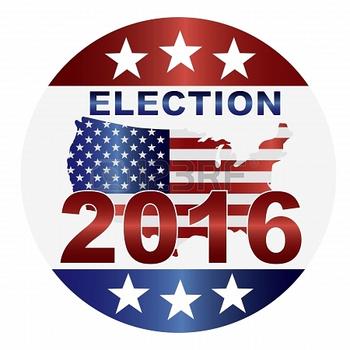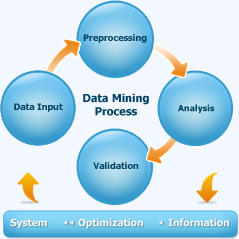Big data has become one of the most influential forces in many realms, creating far-reaching consequences and changing the course of events in areas such as trade and commerce, global business, sports, entertainment and marketing. One of the areas where the influence of big data inspired decisions has been felt in a major way recently is in the field of politics. All over the world, more and more politicians are making use of the immense wealth of information that big data provides to facilitate their campaign decisions, and reaping rich rewards as a direct result.
US Presidential Campaigns – A look from a Data Mining perspective
The impact of this trend has not been felt anywhere as much as it has in the US. The US presidential election campaign is a melting pot of data processing and decision making, and the surge in the use of big data as a viable resource has brought about a major transformation in regular processes.
As has been observed many times in the past, the winning candidate in presidential elections in the US is often the candidate with the more compelling campaign. The more compelling campaign is a direct result of better data collection, analysis and smart decision making on the part of the people involved in structuring and running it. This is where big data and data mining have started to come in handy. The large wealth of information freely available and waiting to be harvested and leveraged has brought new dimensions to election campaign strategies, and the difference it creates shows clearly through the achieved results.
For almost two decades, information gleaned from various internet resources have been used to fine-tune election campaigns. The efficacy of the processes involved and their impact have also grown from strength to strength, culminating in the success of the last major presidential election campaign. Currently, with the advent of the Cruz campaign leading up to the impending elections in 2016, the importance of data mining has become more pronounced. Campaign directors are currently using data mining and analysis to arrive at major decisions regarding contacting potential voters, scheduling important events, deciding on advertising and promotional material and crafting the right social media outreach strategy.
The Role of Data Mining in Elections
Over the years, we have seen an upswing the amount of involvement big data and data mining has had over election campaigns. Let us take a look at the evolution of these methods and the difference they have been making in shaping the fortunes of election candidates –
- The process of leveraging digital data for election campaigns began in 1999-2000 when campaign directors of some candidates started using the internet to raise funds and mobilize volunteers. Along with physical, door-to-door approaches, new points of contact were established through the specific use of digital resources.
- Over the course of the next few cycles, data collection and analysis became a vital part of election campaigns, both in the field and in the digital realm. Campaign directors used the internet to send campaign messages, receive responses and gauge their effectiveness, paving the way for better campaign strategies.
- In 2004, the campaign team of the President running for reelection used innovative methods like data mining and analysis to directly micro-target small groups of potential voters in order to send the right messages and secure their support.
- Campaigns in 2008 and 2012 saw a huge rise in the use of data mining and analysis. Structured contacts with potential voters were built on the basis of data collection and analysis, and the campaign managers commissioned independent firms to collect copious amounts of social behavior data from the internet. This data was used to secure support for voluntary service, opt-in newsletter membership and fundraising activities.
- In 2012, data mining was a central point of the Democratic election campaign. Campaigns analysts collected data about every single member of the electorate in order to gauge amount of support and delve into possible techniques of persuasion.
Since in the US, the success of election campaigns is more or less decided by public participation, it is imperative for election campaign managers to have access to important data on an individual and group level. The collection of behavioral data helps campaigns profile the voter pool into categories and plan the right strategies regarding time and resource investments to secure the support of these separate profile groups. This trend is set to be further refined and used in an even larger capacity in the impending 2016 elections where the masterminds behind the Cruz campaign try to secure majority support by formulating the right strategies and plans as indicated by their data mining and analysis efforts.
Data Mining for Election Campaigns – The Way Forward
It has been extremely evident from the last few election campaigns in the US that data mining and analysis can be a potent weapon in the right hands. In the 2012 campaign, both parties employed various data mining and social data analysis techniques to cut through the competition, and many people even go as far as to attribute the Democrat victory to their data supremacy. This clearly shows the overall impact that data mining can have on the fortunes of election campaigns. The potential for further compelling and convincing use of data mining is virtually limitless, and the benefits that can be reaped from them are sky-high.
Let us take a look at some of the many potential uses of data mining for the upcoming Cruz election campaign –
- The most important advantage that data mining brings to any election campaign is the sheer spread and versatility of the information that can be acquired. Data mining can be used to harvest demographic information, obtain political data, gauge voter behavior and sentiments, and predict the status of a candidate’s fortune at a particular point of time with considerable accuracy.
- The information acquired from data mining can be leveraged to launch the perfect campaign promotion drive. Campaign managers can take advantage of multiple media like the web, TV, mobile, social networks and other public forums to target potential voter groups and to secure their support with the help of tailor-made messages and communication.
- Data mining can also be effectively used for convenience and ease of use of information, as campaign analysts have the ability to combine various disparate and seemingly unconnected databases into a single pool of constantly growing information which is easier to access, analyze and leverage. Rather than simply pulling at chunks of data, such a database would allow analysts to build convincing analytical models which can predict voter behavior, the degree of possible effective persuasion and mass sentiment. It allows candidates to have an innovative, metric-driven campaign where there are a lot less variables to account for.
In the wake of the 2016 elections, there are public and private concerns about the safety of voter data pools. Many have voiced their concerns about the possible impacts of a data breach. Campaign manages, therefore, are busy implementing rock-solid privacy systems into their efforts. Looking forward, it is to be expected that the Internet of Things will throw out large chunks of big data waiting to be mined and leveraged in the lead-up to the 2016 elections.
How can Data Mining be leveraged for max effect?
The responsibility of campaign managers at this point of time is to find a way to collect and analyze the data without invading anyone’s private space, and use the information to interact more meaningfully with voters. The challenge here is to acquire relevant, actionable data using a process that is streamlined and efficient and justifies the associated costs. The correct use of data mining can also help candidates make accurate predictions about their fortunes while factoring in the effects of uncertain factors which might influence the outcome of an election. Essentially, if used right, data mining can become a powerful tool in the right hands, providing an election campaign with all the right information to make a difference, secure public support and have a fighting chance on Election Day.
Another important implication of the massive adoption of big data and data mining in the political context is the development of new techniques of collection, analysis and use of information so as to make the process more efficient and cost-effective. Campaign analysts associated with the Cruz campaign are sure to try and further fine-tune the process which proved radically effective during the 2012 Democrat campaign, in an effort to reach their goals and secure victory for their candidate.
With the development of new and better innovations in the field, some of the public skepticism about big data and some of the patent concerns about data safety and privacy might also be assuaged. To be effective in reaching out to people and spreading their message, an election campaign needs to project the vibe of trust and reliability, and better data mining might well bring about ways to achieve that smoothly. As data analysts put their best foot forward, it can be expected that the 2016 elections will hold a few more surprises relating to the collection, analysis and use of voter information.






















